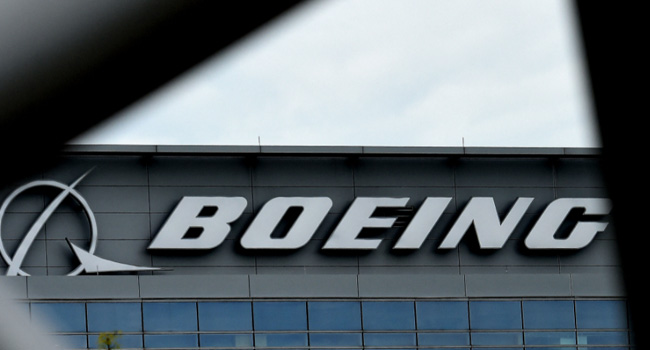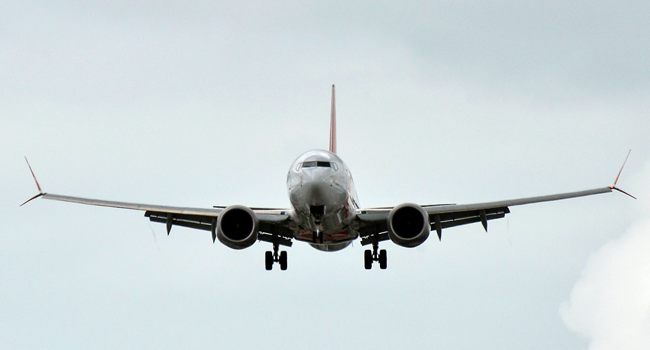
The fire broke out on the plane, operated by Ethiopian Airlines, on Friday afternoon, when it was parked at a remote stand with no passengers on board, eight hours after arriving from Addis Ababa. No one was injured.
External scorching could be seen close to the plane’s tail, in a different area from the bays containing batteries. There was no official indication of what could have caused the fire.
“The aircraft has been moved to a secure hangar at Heathrow and the investigation has begun,” said a spokesman for Britain’s Air Accidents Investigation Branch (AAIB).
The AAIB will lead the investigation, working alongside the U.S. Federal Aviation Administration and National Transportation Safety Board (NTSB), Ethiopian Airlines and Boeing, he said.
Separately, engineers from Britain’s Thomson Airways were inspecting their own Boeing Dreamliner after it had to turn back during a flight on Friday from Manchester in England to Sanford in Florida because of an unspecified technical issue.
Boeing will be keen to reassure airlines, travelers and investors over the cause of the Heathrow fire as quickly as possible but under aviation rules it will be up to investigators to decide how much information to release and when.
Ethiopian Airlines, one of Africa’s top five carriers, said it would continue to fly its Dreamliner fleet. It has ordered a total of 10 Dreamliners of which four have been delivered.
“The incident at Heathrow happened while the plane was on the ground and had been for more than eight hours and was not related to flight safety,” the carrier said in an emailed statement on Saturday.
“After a normal flight from Addis to London passengers disembarked in the morning and the aircraft was cleaned. It was towed to a remote parking area as usual and parked properly with all internal and external powers switched off,” said an official from the airline’s public relations department.
BATTERY PROBLEMS
The Heathrow and Manchester incidents are a new blow for Boeing after the entire global fleet of Dreamliners had to be grounded for three months, ending in April, after one high-tech battery caught fire and another overheated.
Boeing shares closed down 4.7 percent at $101.87 on Friday, knocking $3.8 billion off the company’s market capitalization.
Quoting Mark Mangooni, Ethiopian Airlines’ senior manager in Britain, the Financial Times reported that airline staff had discovered a problem with the aircraft’s air conditioning system during a routine inspection and had seen sparks but no flames.
The report did not make clear when this had happened. Reuters could not reach Mangooni for comment.
Heathrow briefly closed both its runways to deal with the fire, and a spokeswoman said on Saturday that the airport was back to normal operations, although it was still dealing with a backlog of delays and cancellations due to Friday’s incident.
The Dreamliner’s two batteries are in compartments located low down near the front and middle of the plane. Damage to the Ethiopian plane appeared to be on top of the fuselage, close to the tail, according to video from the scene.
(Graphic of key areas of the 787: link.reuters.com/zed69t)
Former NTSB Chairman Mark Rosenker said the Heathrow incident was extraordinary, coming so soon after the fleet had returned to service, but warned against jumping to conclusions.
“It’s very early. No one knows where the fire started at this point,” Rosenker told Reuters, adding it could be something as simple as a coffee pot left on in a galley.
A spokesman for GS Yuasa, which makes the Dreamliner batteries, said he had not received any information about whether or not batteries had been involved.
INNOVATIONS
The 787 is Boeing’s biggest bet on new technology in nearly 20 years. It cost an estimated $32 billion to develop and Boeing plans to use hundreds of innovations such as its carbon-fiber composite skin and electrical system to enhance other jets.
The 787 Dreamliner fleet was grounded by regulators at the start of the year after batteries overheated on two of the jets within two weeks, including a fire in a parked Japan Airlines plane in Boston.
Boeing was forced to halt deliveries of the jet while it was grounded and airlines stopped ordering the plane at that time. Orders have since resumed and Boeing has logged 83 Dreamliner orders this year, bringing its current order book to 930 planes.
Boeing never disclosed the cost of the three-month grounding but said it absorbed most of the expense in the first quarter while still posting a 20 percent rise in profit. Its shares are up 35 percent this year, even after Friday’s loss.
The plane which caught fire in London was the first of the 787 fleet to resume flight after the battery-related grounding.
A person familiar with the aircraft’s configuration said the damaged area appears close to galleys and environmental control systems, but added that it was too early to link the fire to any specific equipment.
Several airlines said they were continuing to operate their 787s, including United Continental, Polish airline LOT, Japan Airlines and ANA, the world’s biggest operator of the Dreamliner.
Ethiopian Airlines Dreamliners are powered by General Electric GEnx engines.




